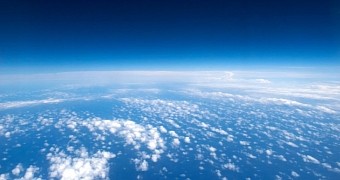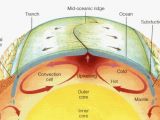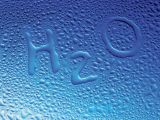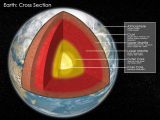Just days ago, scientists with the European Space Agency published a paper saying that, according to evidence at hand, our planet most likely got its water from asteroids that smashed into it eons ago.
As it turns out, researchers with the Ohio State University in the US disagree. They argue that, although it might be true that asteroids did in fact bring water to our planet at some point in the distant past, Earth is very much able to make its own water.
Thus, speaking at a recent meeting of the American Geophysical Union, these scientists detailed how geologic processes can, under certain circumstances, birth water deep inside out planet's entrails and then push it all the way to the surface.
How Earth can make its own water
In a report documenting their work, the Ohio State University researchers explain that plenty of scientists believe that Earth was a fairly dry place in its early days and that it was celestial bodies that collided with it that gave it the gift of water.
Having carried out a series of experiments, the scientists found that it is possible for water to form on our planet from oxygen and hydrogen trapped in minerals. They say that, when exposed to certain conditions, this oxygen and hydrogen can interact and form water.
This latest theory concerning the emergence of water on our planet stipulates that the ingredients needed to make water are sequestered deep inside Earth. These ingredients are believed to get together on a regular basis. Whatever water is produced during these romantic encounters is pushed to the surface via plate tectonics.
Essentially, what these researchers are saying is that, all things considered, it is possible that our planet's seas and oceans are constantly being replenished from within. It this is true, this means that Earth's water cycle is far more complex than initially believed.
“If mantle circulation is also part of the water cycle, the total cycle time for our planet’s water has to be billions of years,” researcher Wendy Panero, currently as associate professor of earth sciences at the Ohio State University, explains the importance of this study.
Zooming in on Earth's hidden water reserves
Provided that specialist Wendy Panero and fellow researchers are right when saying that Earth can make its own water through a series of geological processes involving oxygen and hydrogen stored in minerals, this means that our planet probably holds hidden water reserves in its core.
In fact, the Ohio State University scientists estimate that there is enough water lurking in Earth's mantle, which accounts for about 80% of the planet's overall volume, to fill the Pacific Ocean. True, this water presents itself in the form of stray atoms, but it is there nonetheless.
“In this solar system, Earth is unique because we have liquid water on the surface. We’re also the only planet with active plate tectonics. Maybe this water in the mantle is key to plate tectonics, and that’s part of what makes Earth habitable,” says scientist Wendy Panero.

 14 DAY TRIAL //
14 DAY TRIAL // 



